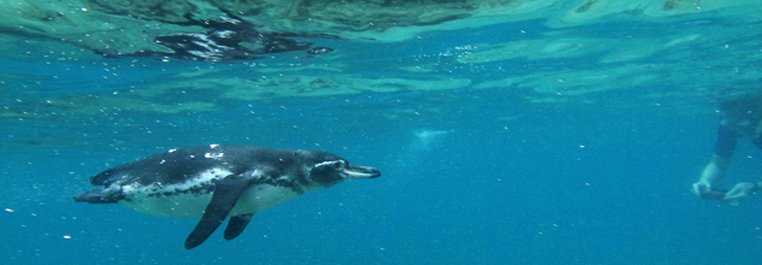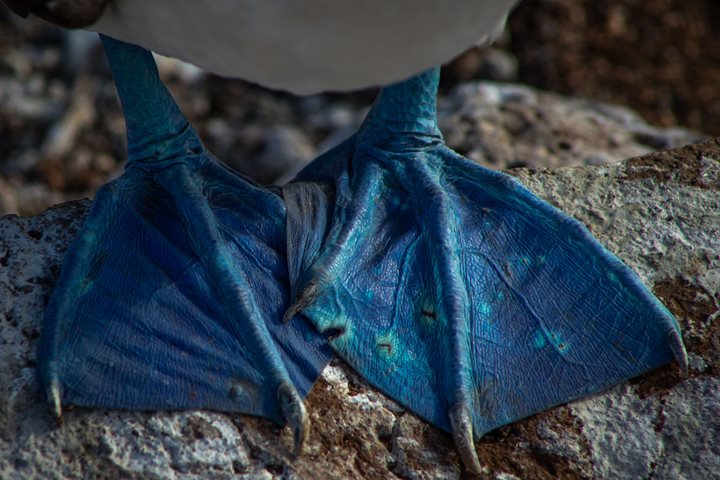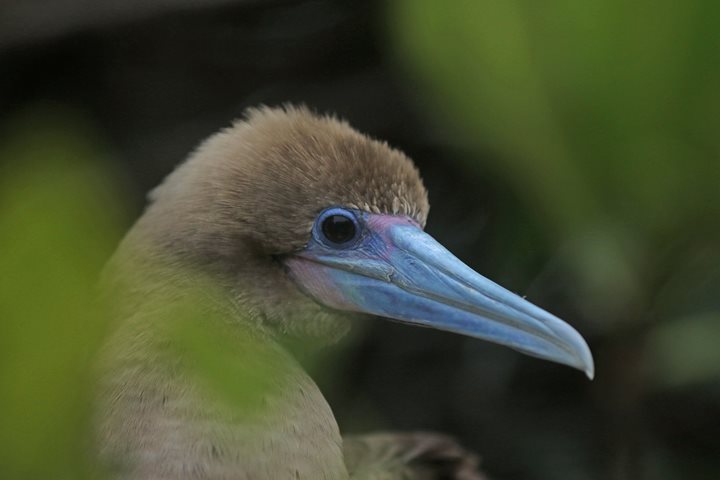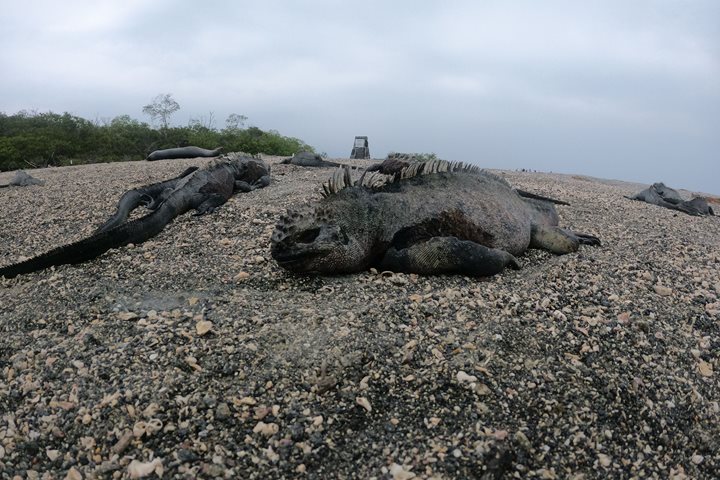Before breakfast the National Geographic Islander sailed in between the offshore islands known as the Bainbridge islets. Soon enough the anchor was placed and Zodiacs were lowered in preparation for our morning of exploration in the area. Our goal and desires for the day were to search out the small and elusive Galápagos penguins.
Immediately after breakfast we got into Zodiacs and set off along the coastline of Santiago Island. As Sombrero Chino lies just a few hundred yards off the coast of Santiago, a calm and shallow passage has been formed between the two islands that provides an ideal setting for all kinds of exploration—by Zodiac and with snorkels primarily. Almost right off, we saw tiny spots of white against the black basaltic lava. On approach it turned out that, indeed, we were seeing penguins! And not just one or two as is the norm in Galápagos. As we got closer and inspected the surrounding rocks and nearby ledges, we found a total of eight individuals resting in the area!
Another unexpected surprise followed: a feeding frenzy among some blue-footed boobies in the channel. Again and again they surfaced, flew off in a group, then with a vocal signal (a honk or whistle) from one or the other, they turned to start a dive, angling their wings back into an arrow-like form and sleekly entering the water with an audible and watery “thunk.” We didn’t see them with fish in their beaks on surfacing as they swallow their prey immediately; it is also believed they average a one-in-three success rate.
Of course, this made the snorkelers eager to get in the water, and so we did after a quick change on board. Others chose to visit a tiny white sand beach perfect for a bit of solitude and peace, surrounded by the world that is Galápagos—blue sea, calm water, white sand, the occasional sea lion.
Those of us who got into the water had a great time, too. We saw lots of fish in the clear water, but it wasn’t until the last five minutes that chaos let loose. I was in the front of the group, paddling slowly along the low black lava bluff with white sand below, looking at it all. That’s when I glanced up ahead into one of the tiny little bays and saw blue-footed boobies, brown pelicans, brown noddy terns and…penguins! A feeding frenzy was moving rapidly our way. I had just enough time to turn around and shout “Penguins are coming!” before putting my mask into the water. A stream of small silvery fish came pouring toward me along the bluff. It was a least a few seconds of watching this stream of sardines or anchovies and knowing that something was chasing them when the penguins and everyone else arrived. My first turn of the head had pelican feet, belly and pouch a few inches from my face. The second turn had penguins dashing up and down, side to side chasing (and catching) fish that tried to hide in rock crevices. Within another few seconds they were gone. An extraordinary adrenaline rush for all of us!
Once back on board, the ship weighed anchor and we made our way out from among the Bainbridge islets, slowing down and sliding by the largest of them all. The island has a crater that is still intact, but just barely. A few more years of erosion and the ocean will take down the remaining thin wall of tuff stone, all that separates the saltwater lagoon inside from the deep ocean water around. Occasionally flamingos can be seen inside, and indeed they were! For a brief moment as the captain paused the ship alongside the lowest part of the crater rim, we stood on our tippy-toes, craned our necks, and spotted six bright pink flamingos up against the near wall. An almost bizarre sight, if one didn’t know how ideally these birds are adapted to extreme environments.
Our afternoon at Sullivan Bay, Santiago Island, also had its unique flavor. We walked on an enormous lava field for a couple of hours. Here, one can use the imagination and see forms and figures in the lava flow that solidified more than 100 years ago. One group of photographers didn’t go far at all, finding subjects to focus on within the first 100 yards.
A full moon rose in the east at sunset, seconds after the late afternoon sun had turned red our surroundings.







